You’ve seen the beautiful Huff’n’Puff Haus, but what’s it made of? See our behind-the-scenes images during the construction stage.
We’ve shared many photos of our beautiful biophilic Huff’n’Puff Haus as it’s received a lot of media attention and award recognition - as the first Certified Passivhaus Premium Strawbale home in Australia.
However, we haven’t often shared the “under-construction” photos (only in keynote presentations/lectures), and these are some of the most-interesting to see the prefabricated strawbale sit-up panels.
Here’s some behind-the-scenes images:
John Glassford from Huff’n’Puff straw construction sent us these images of the panels being fabricated in their factory/shed - we loved the whipper-snipper being used to trim any stray straw! This was panel number “90” from our detailed shop-drawings, and one of the last they constructed before transporting them to the site.
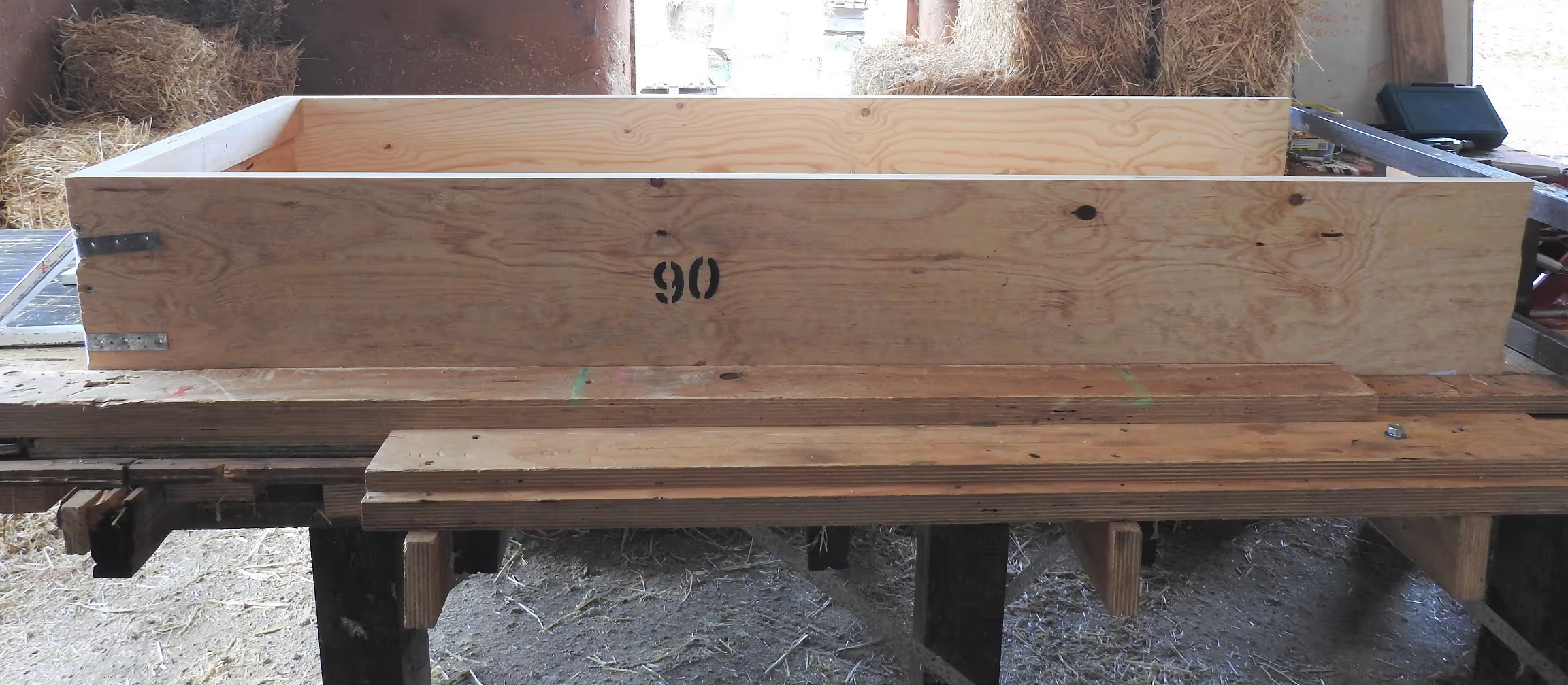
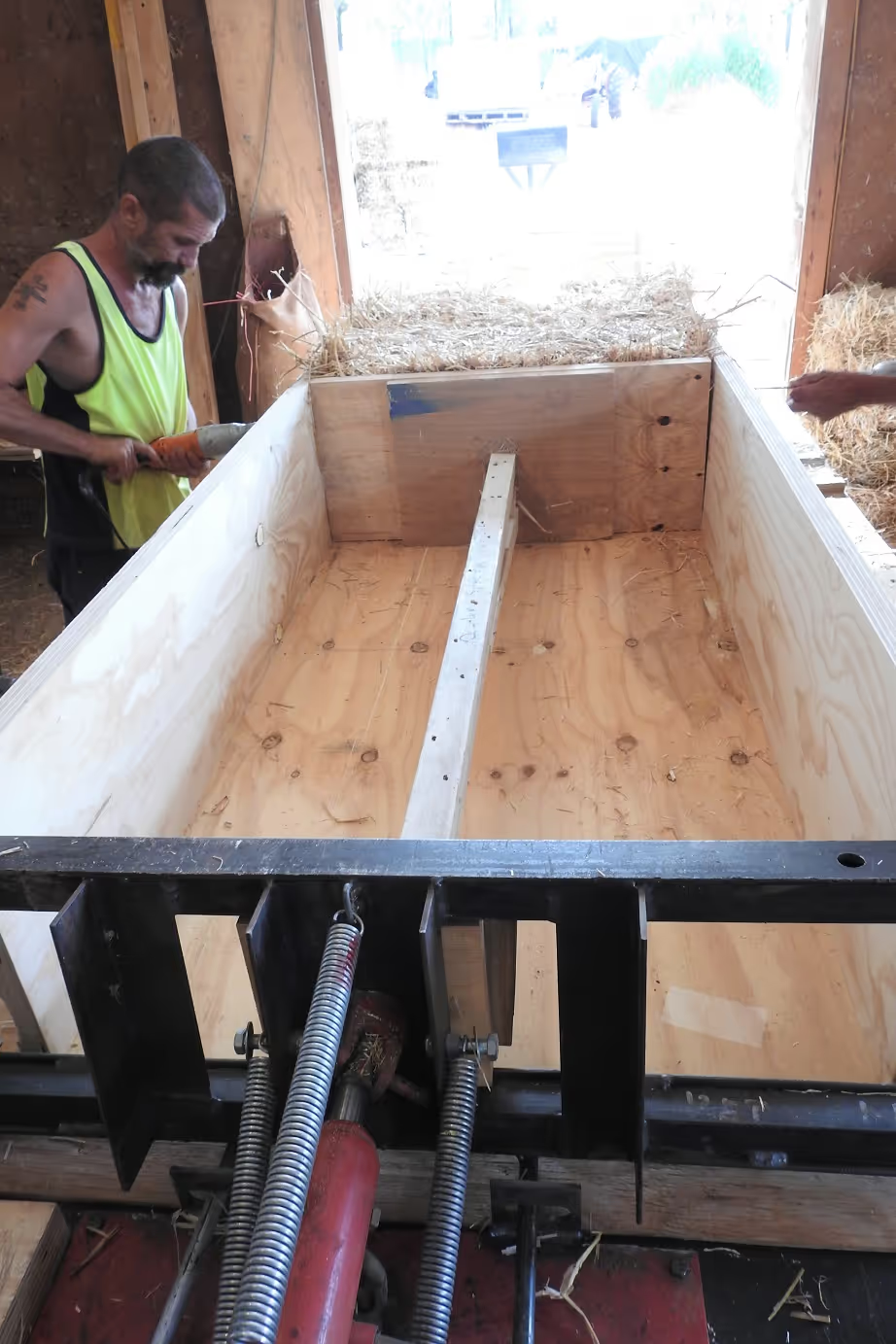
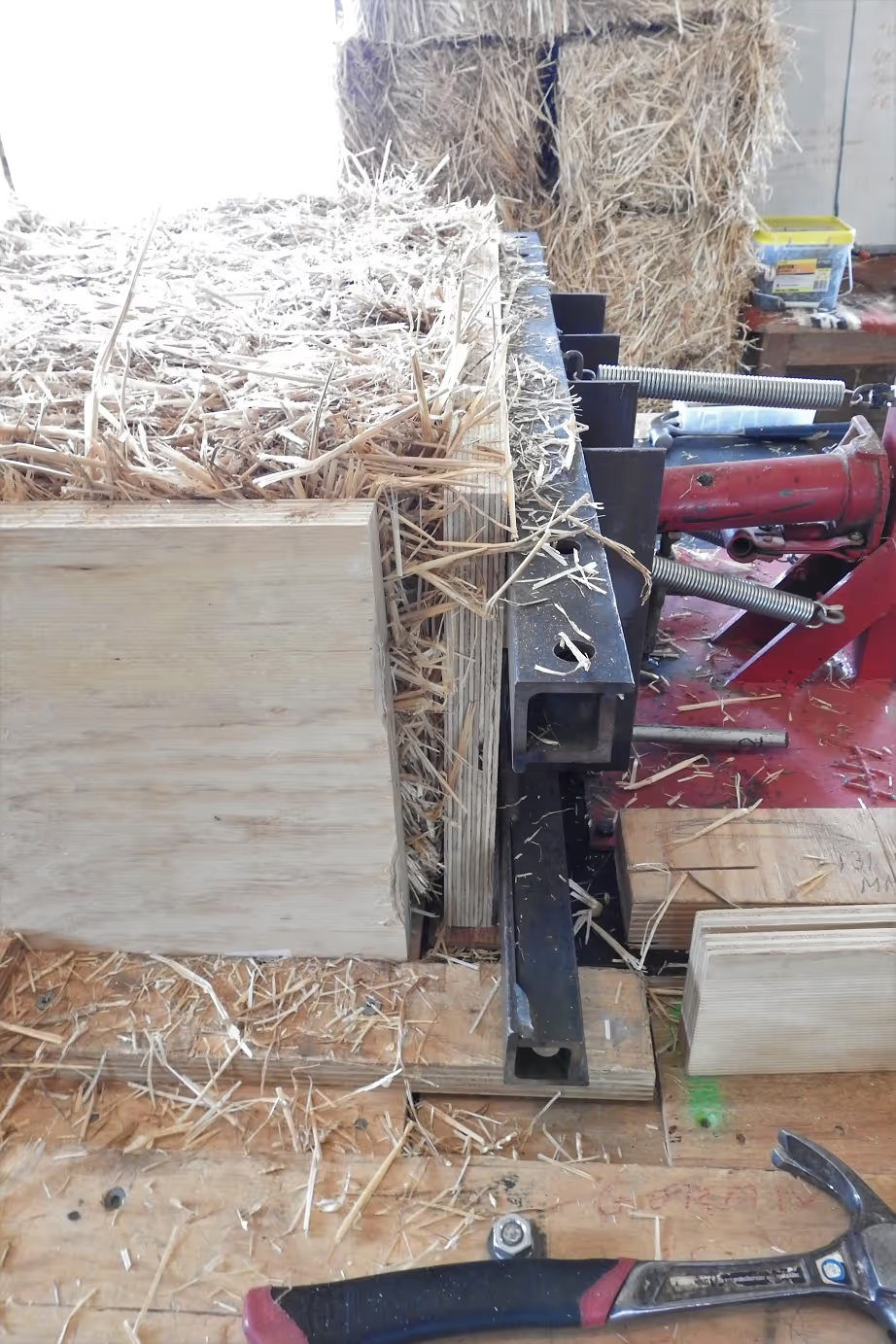
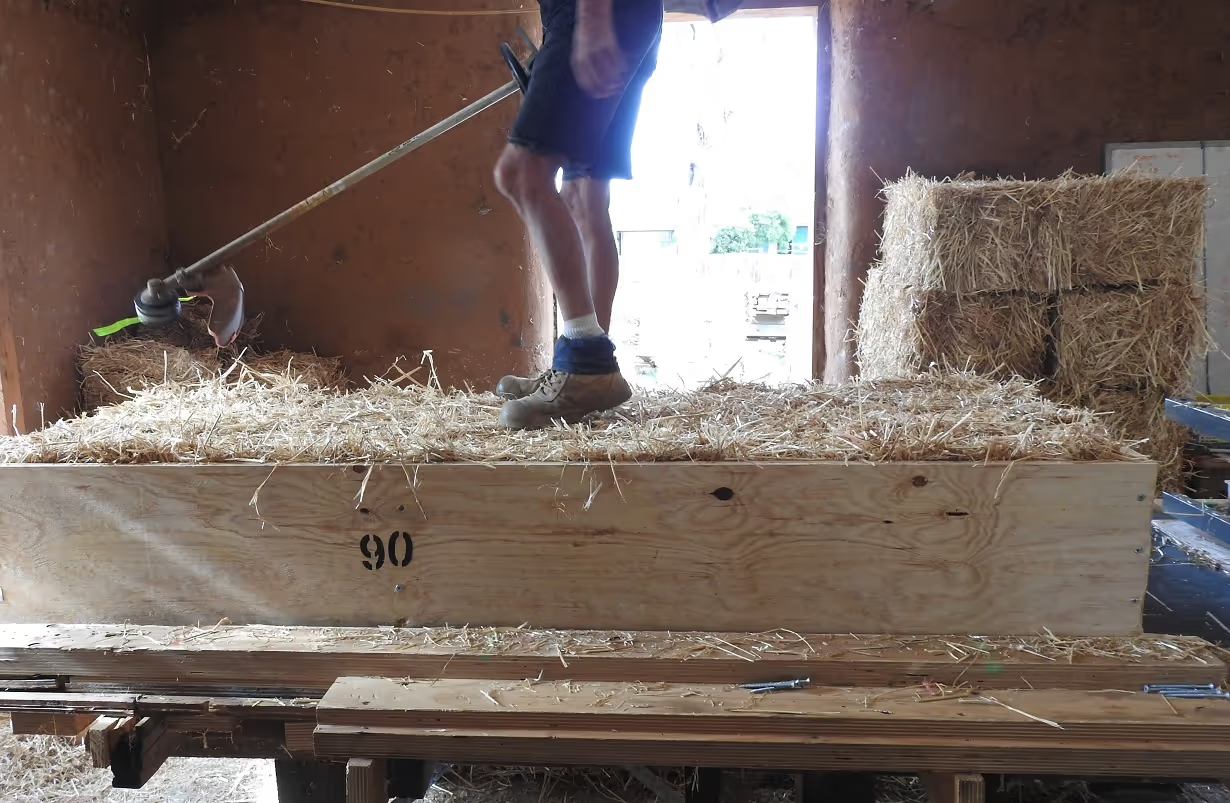
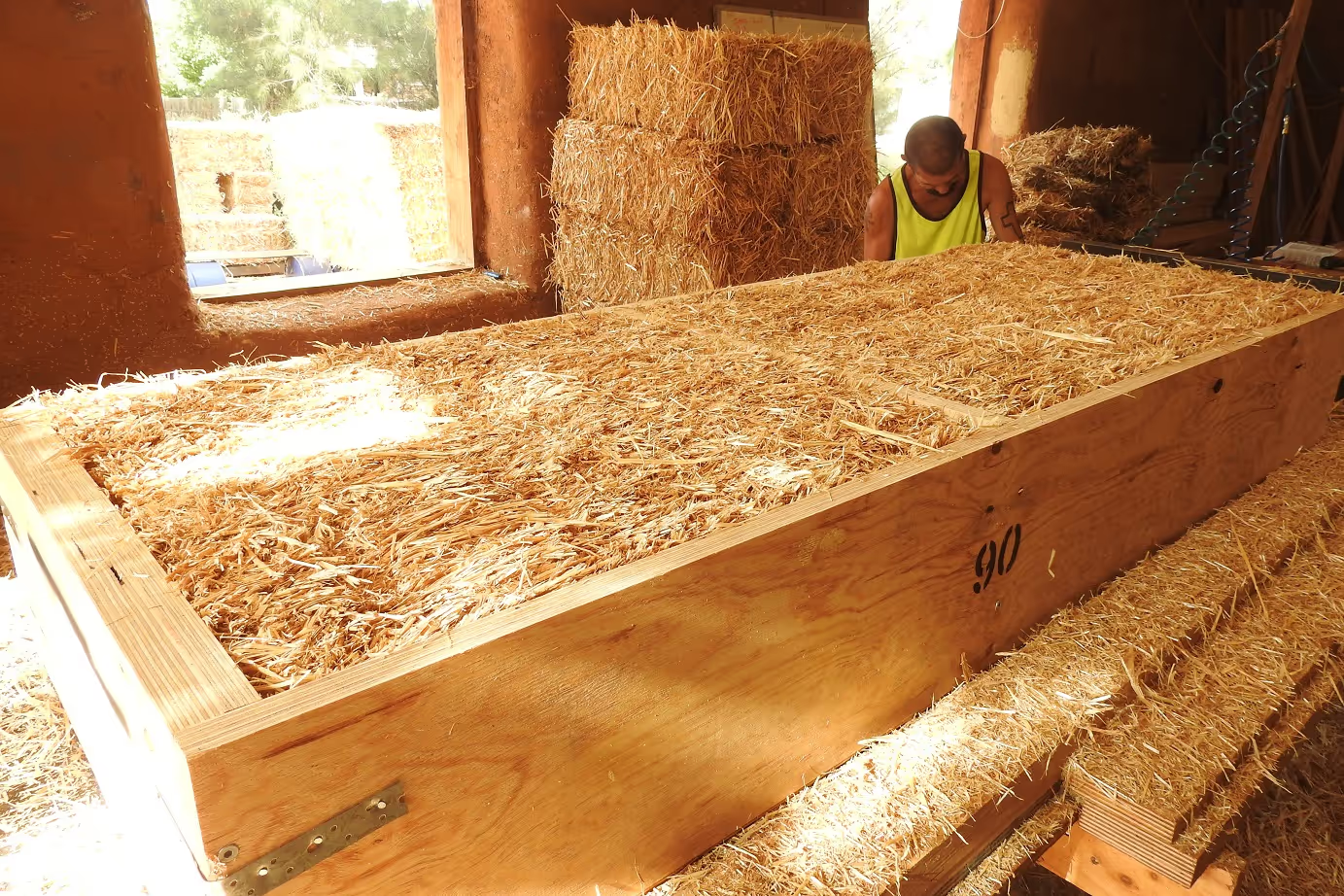
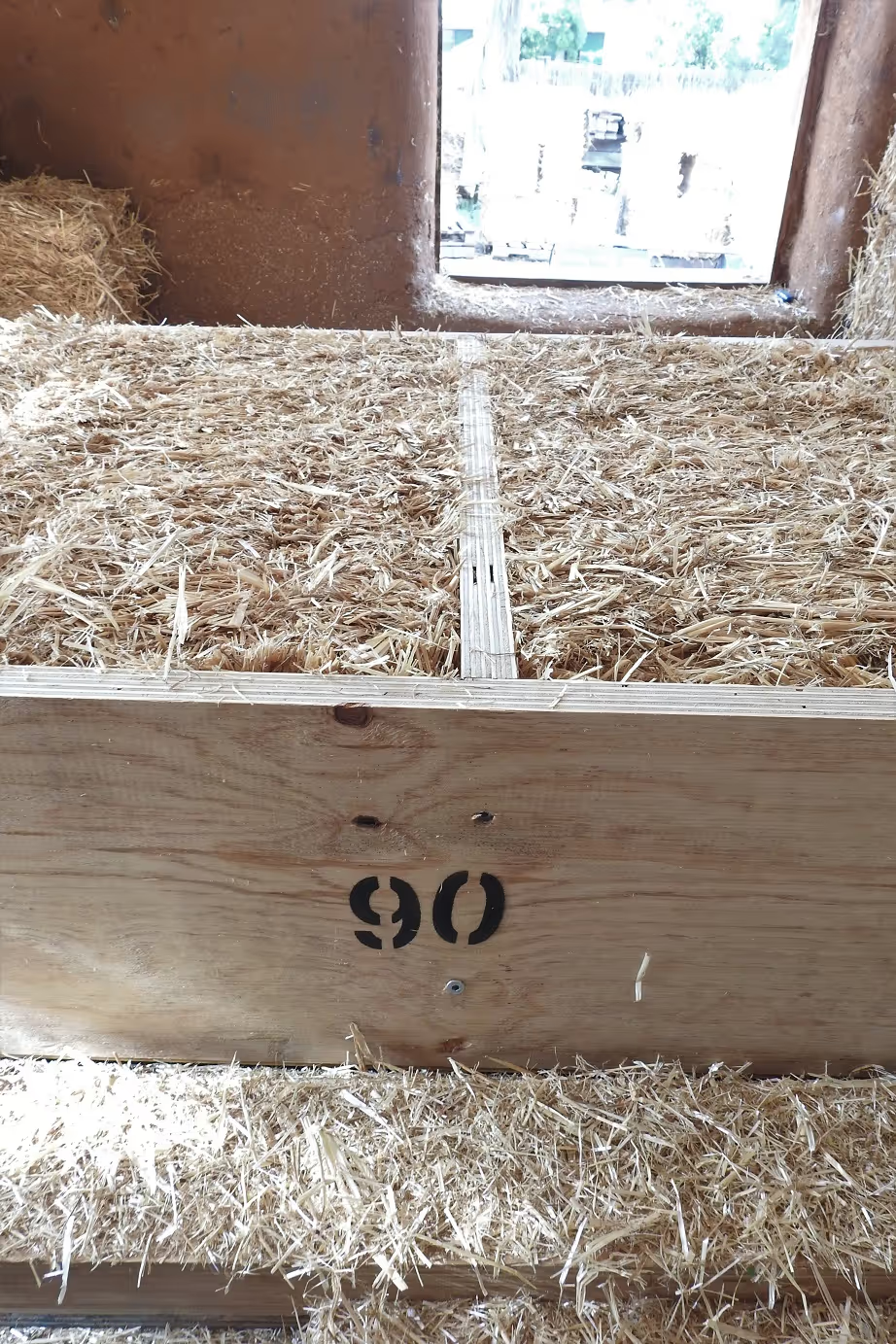
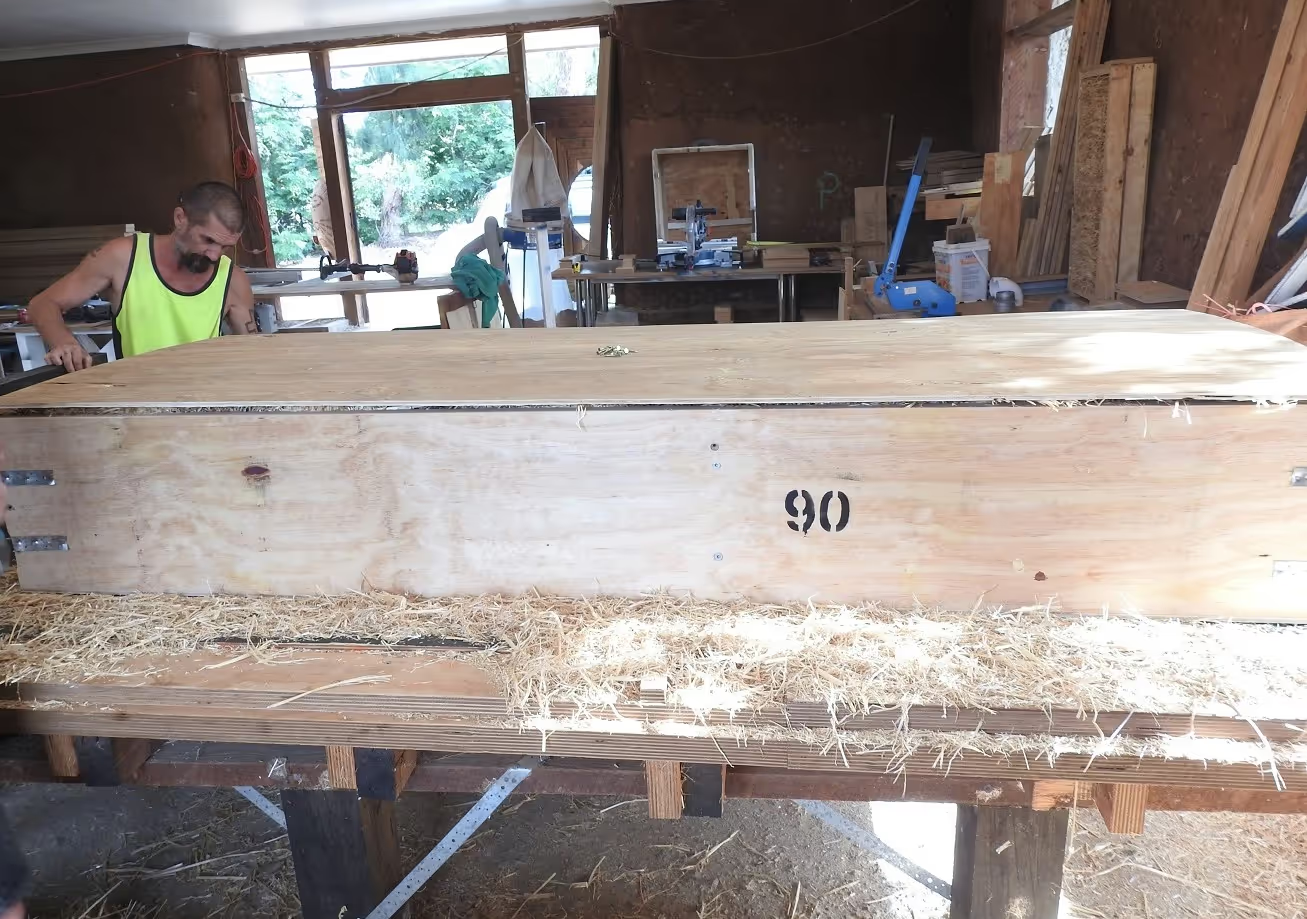
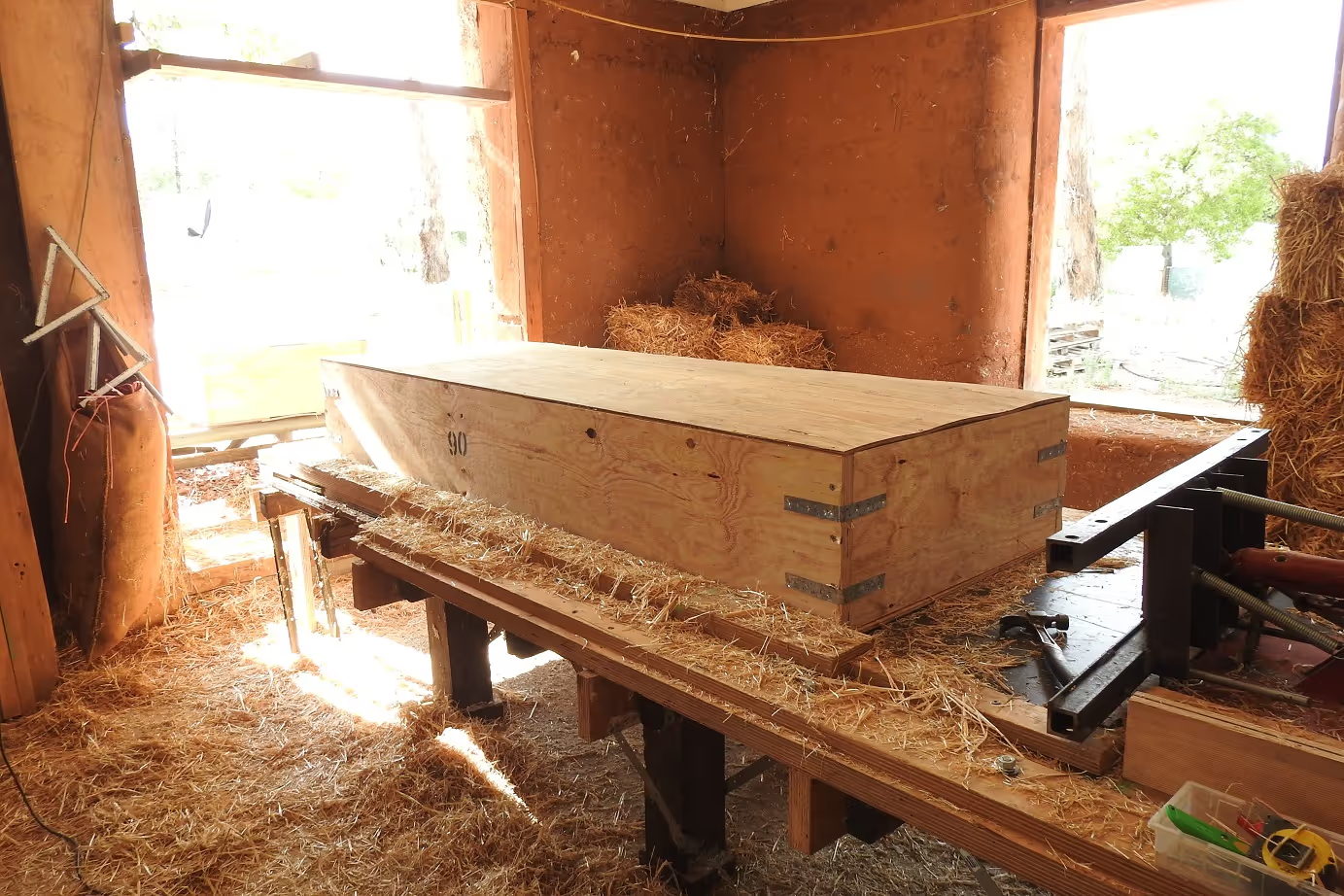
All loaded up on the trucks ready to roll. Each panel was covered with a sheet of ply each side for protection during transport (and to prevent rodents making cosy nests in there). The ply was removed once erected on site.
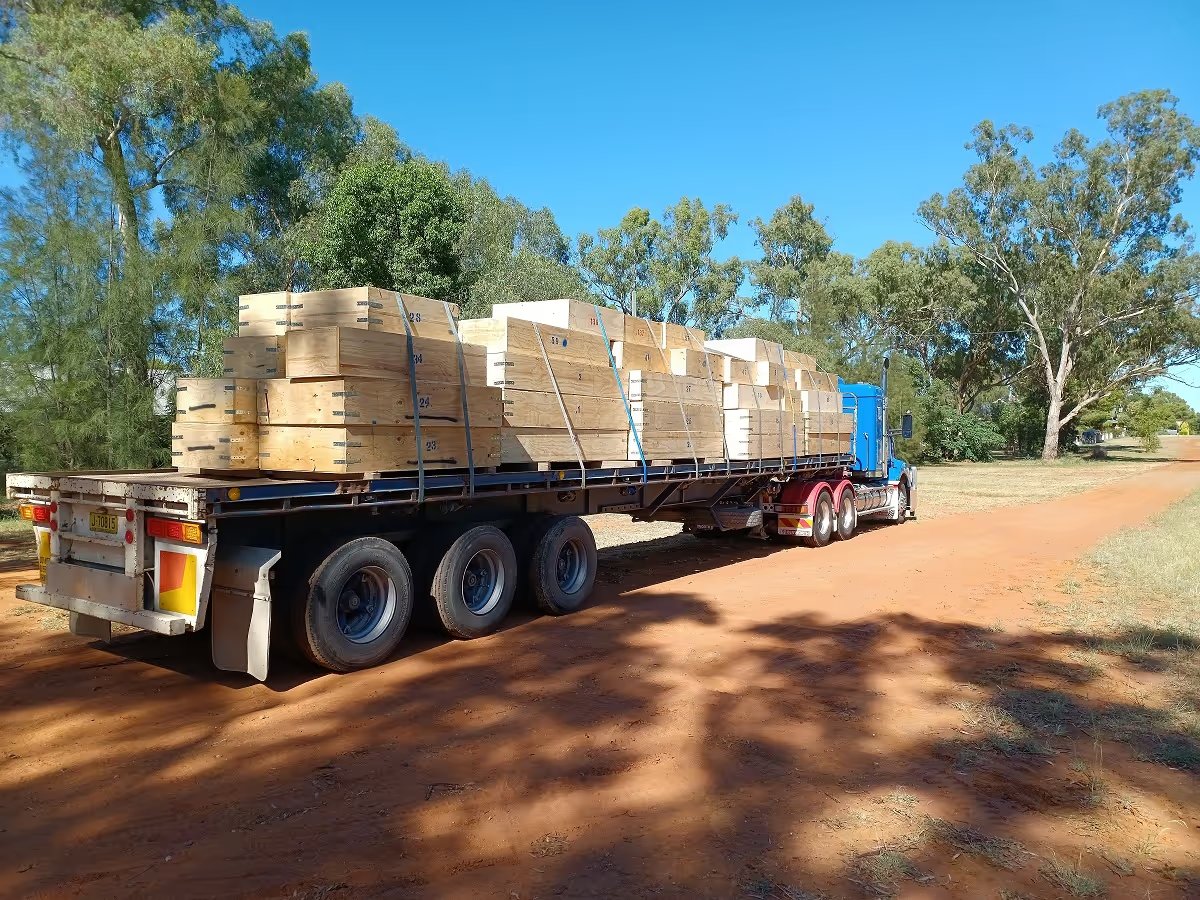
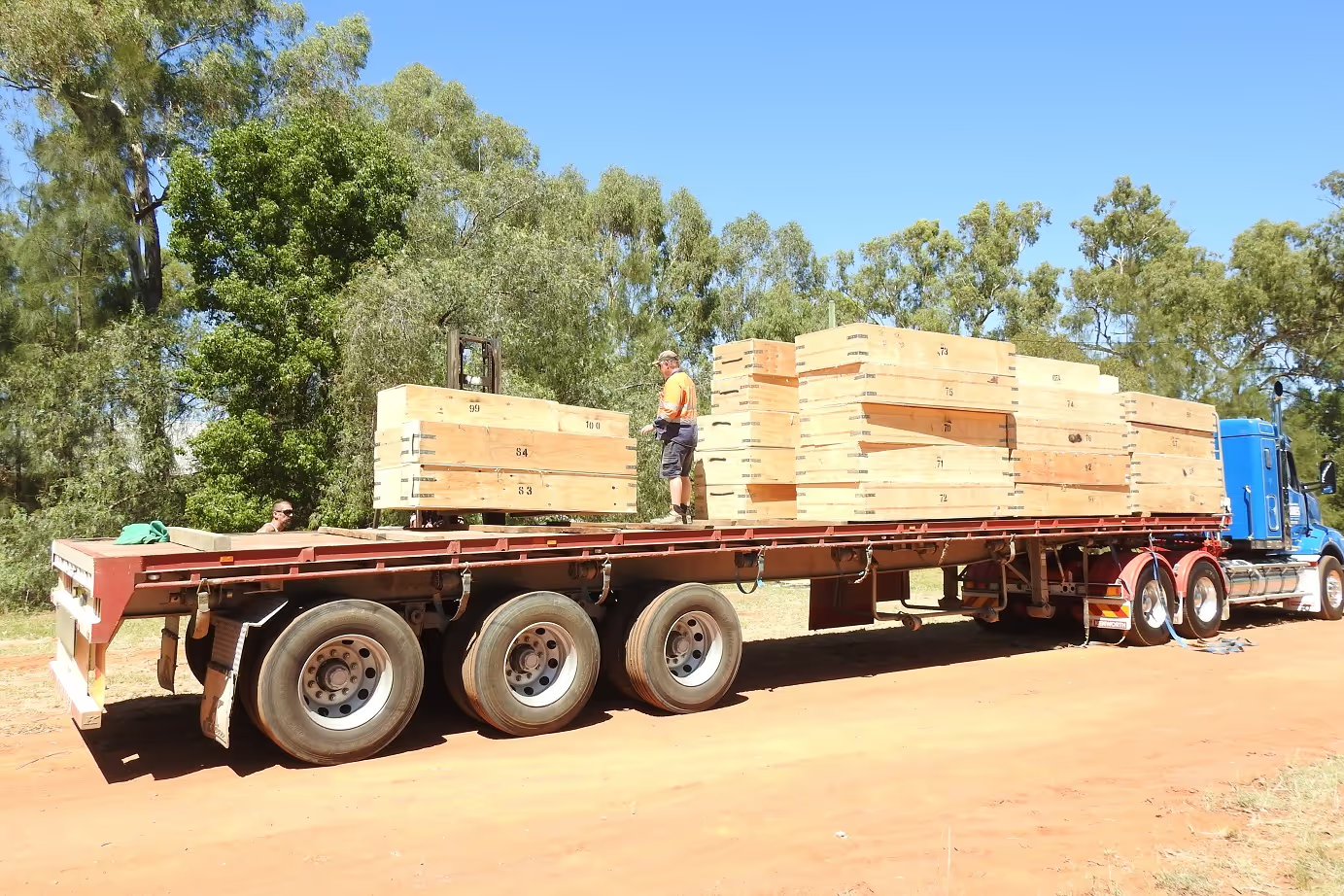
The SitUp panels arrived at site looking like a stack of coffins! Here they are being erected into their vertical positions, and being put into their correct place. This is where the numbering of each one is critical. As the builders (Hedger Constructions) removed the ply at this point, they covered them temporarily with builder’s wrap for protection during construction.
.avif)
-min.avif)
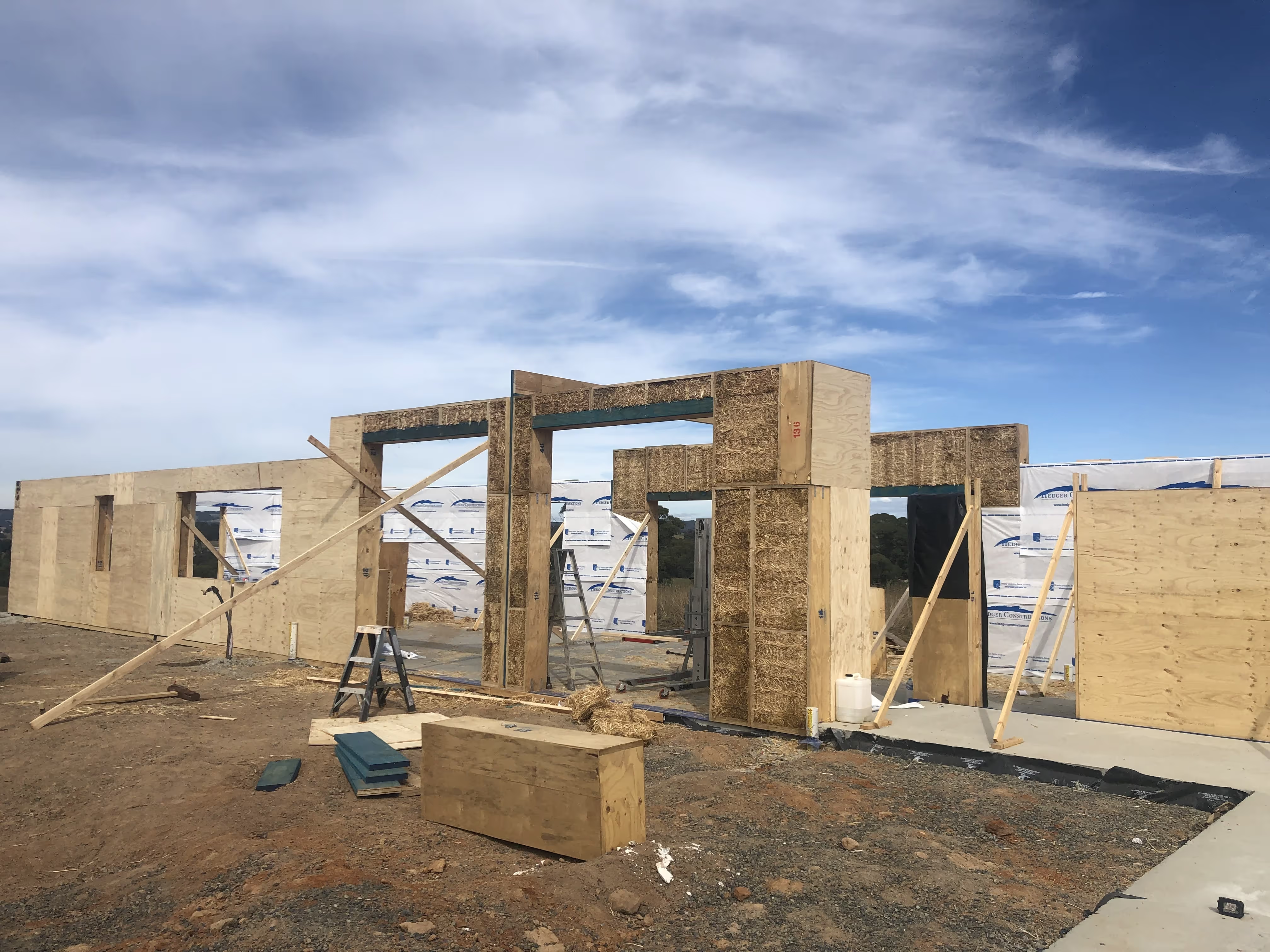
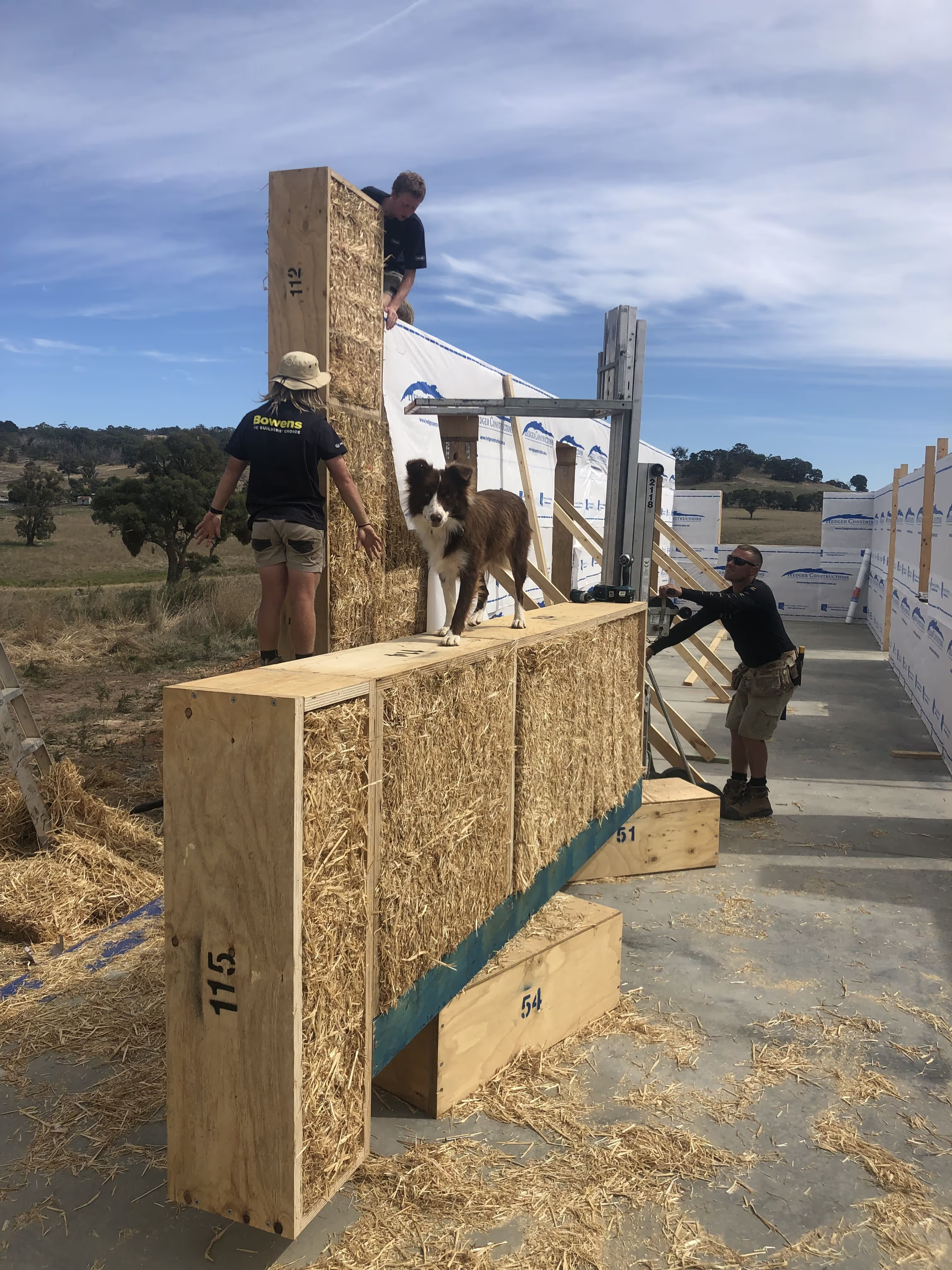
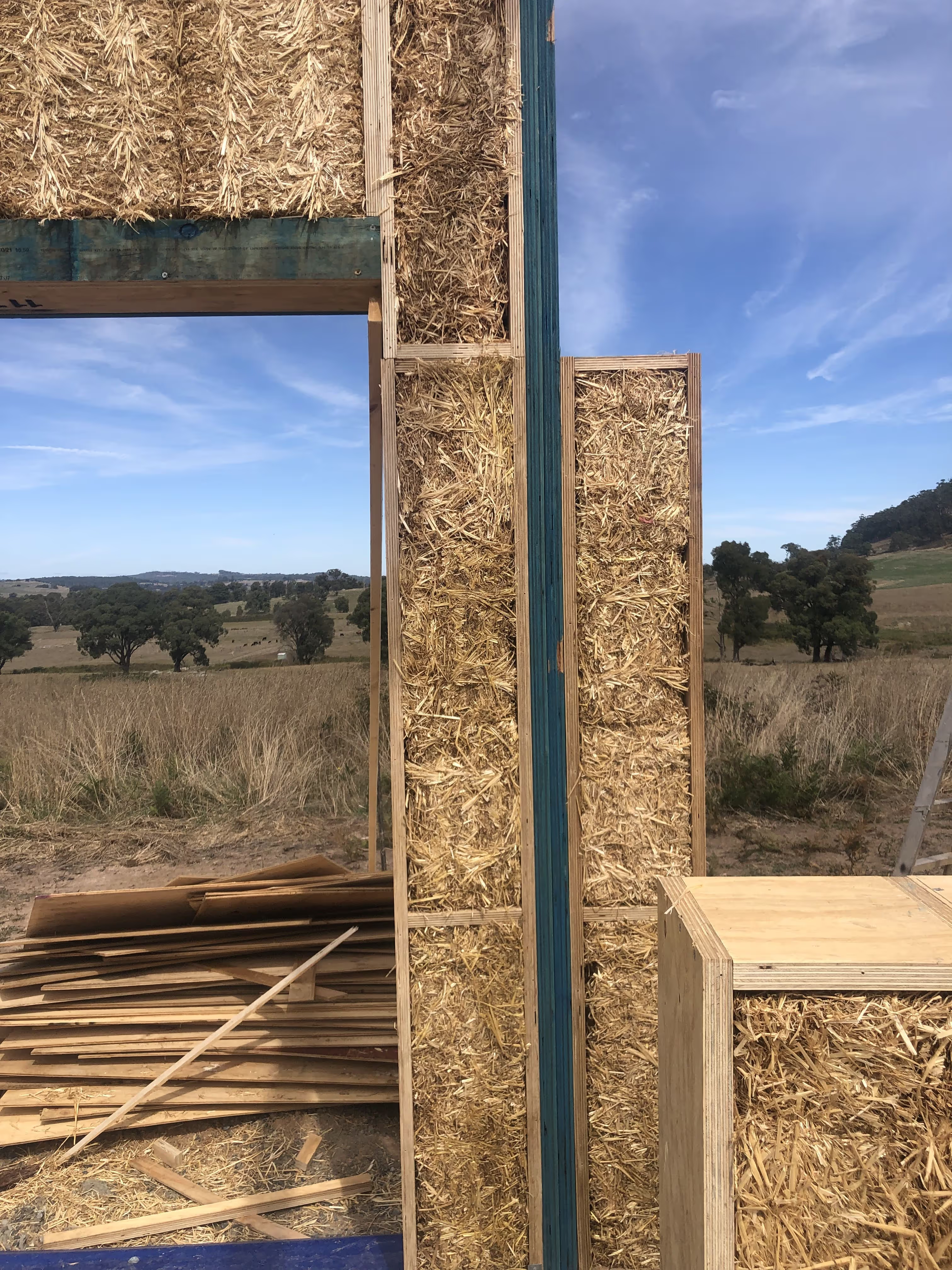
.avif)
.avif)
.avif)
The external walls were built first and roof installed (before any internal walls went in). This made it much easier to deal with internal airtightness (but would not be applicable for every project). Our airtightness strategy was for the straw-panels to be rendered internally, as lime-render is vapour-permeable and airtight. However for the bathrooms and laundries, the Building Surveyor was not convinced that lime-render would meet regulations for wet-area walls, so the decision was made to use an internal air-tightness membrane (Intello) to these walls. We needed to use Intello for the ceiling airtightness as can be seen here. The ducting for the mechanical ventilation can also be seen at the ceiling level.
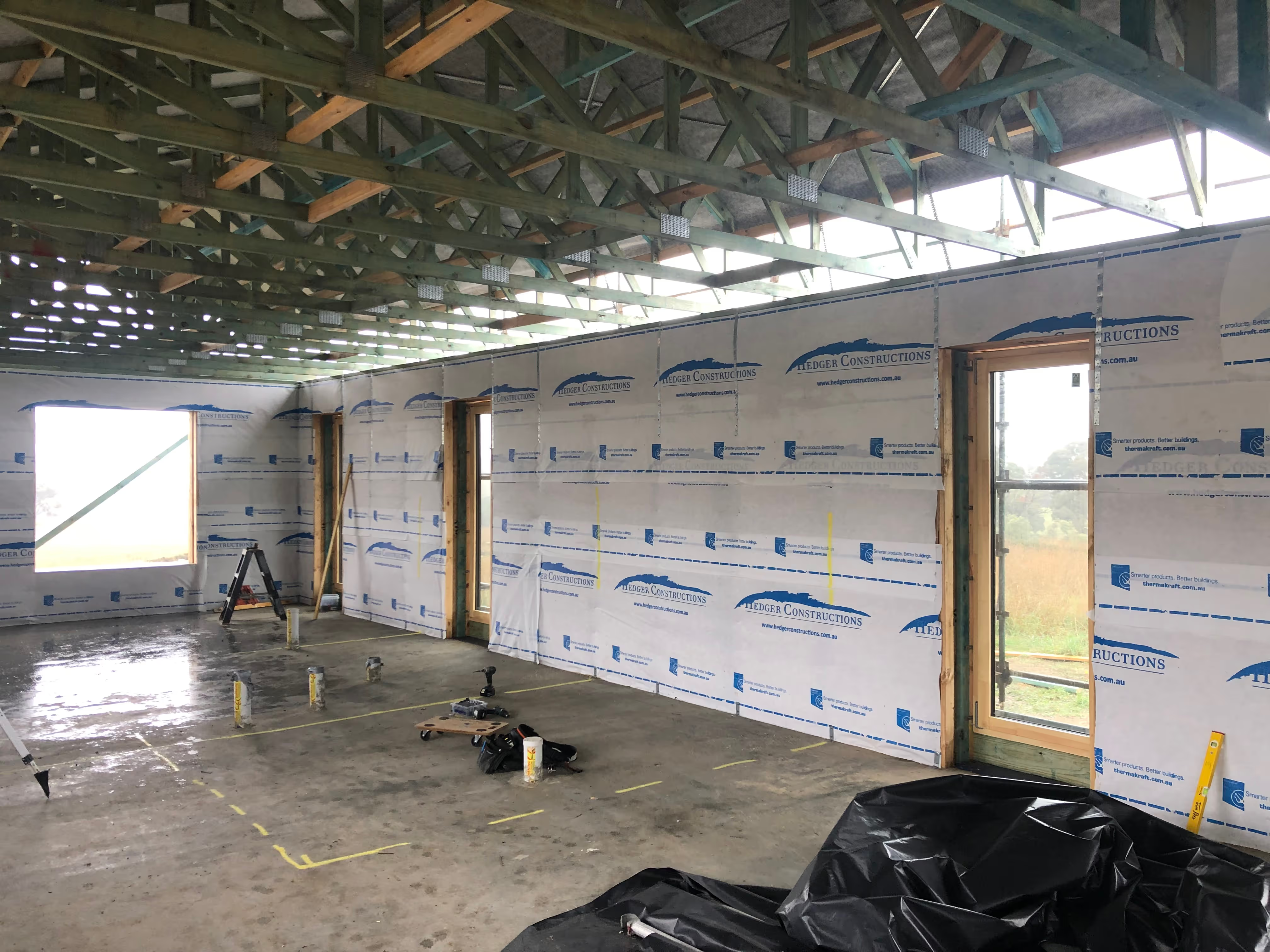
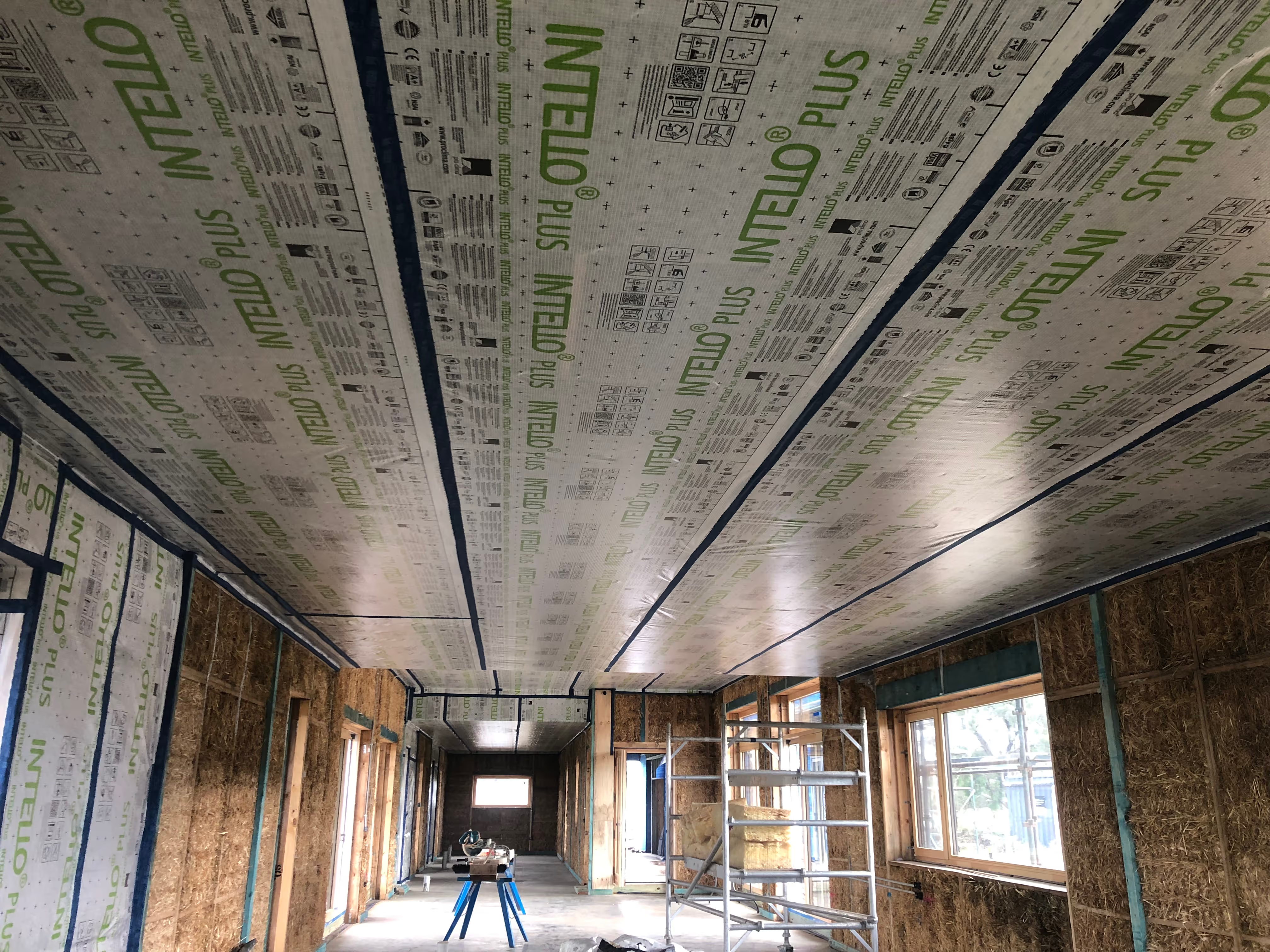
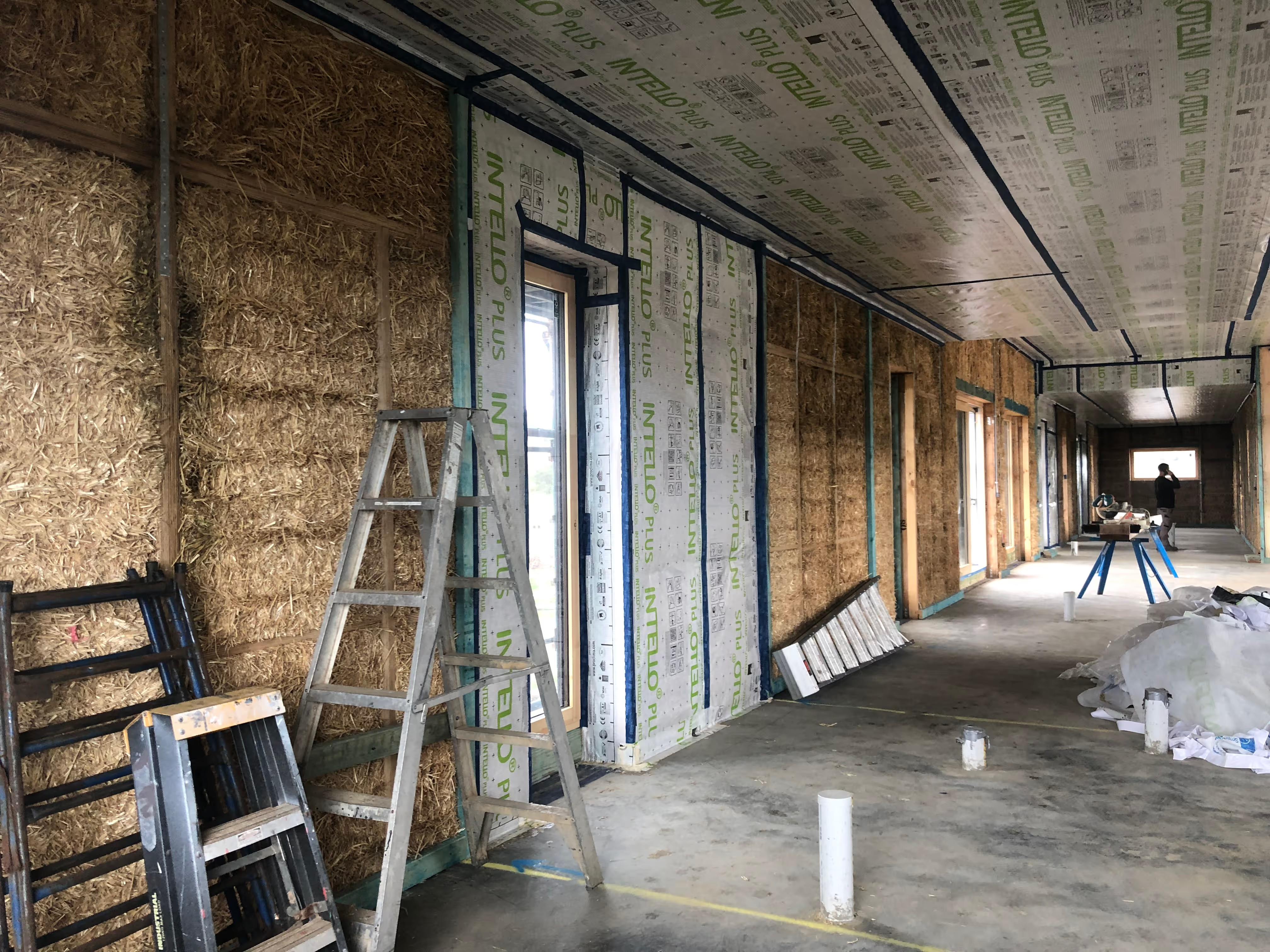
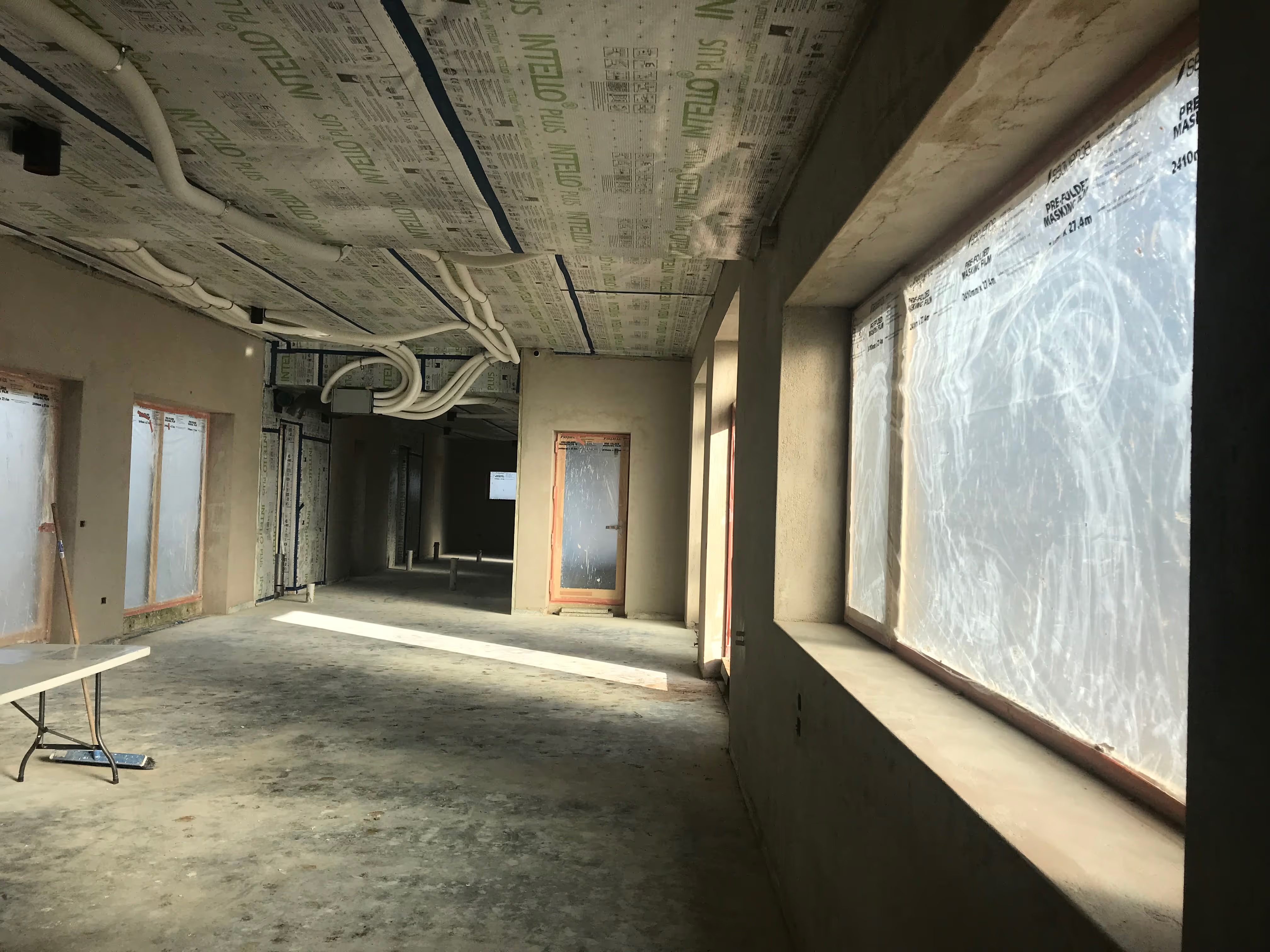
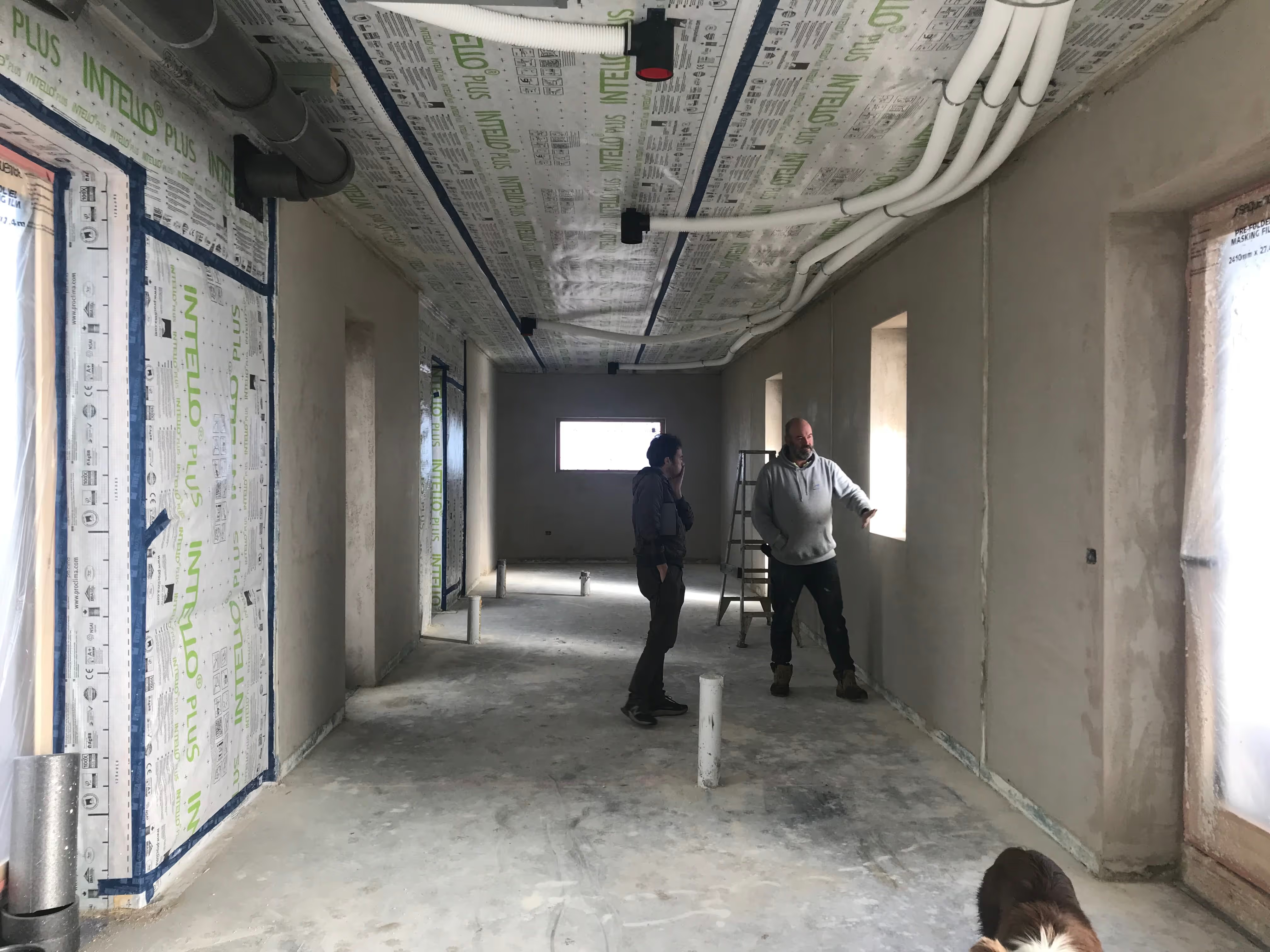
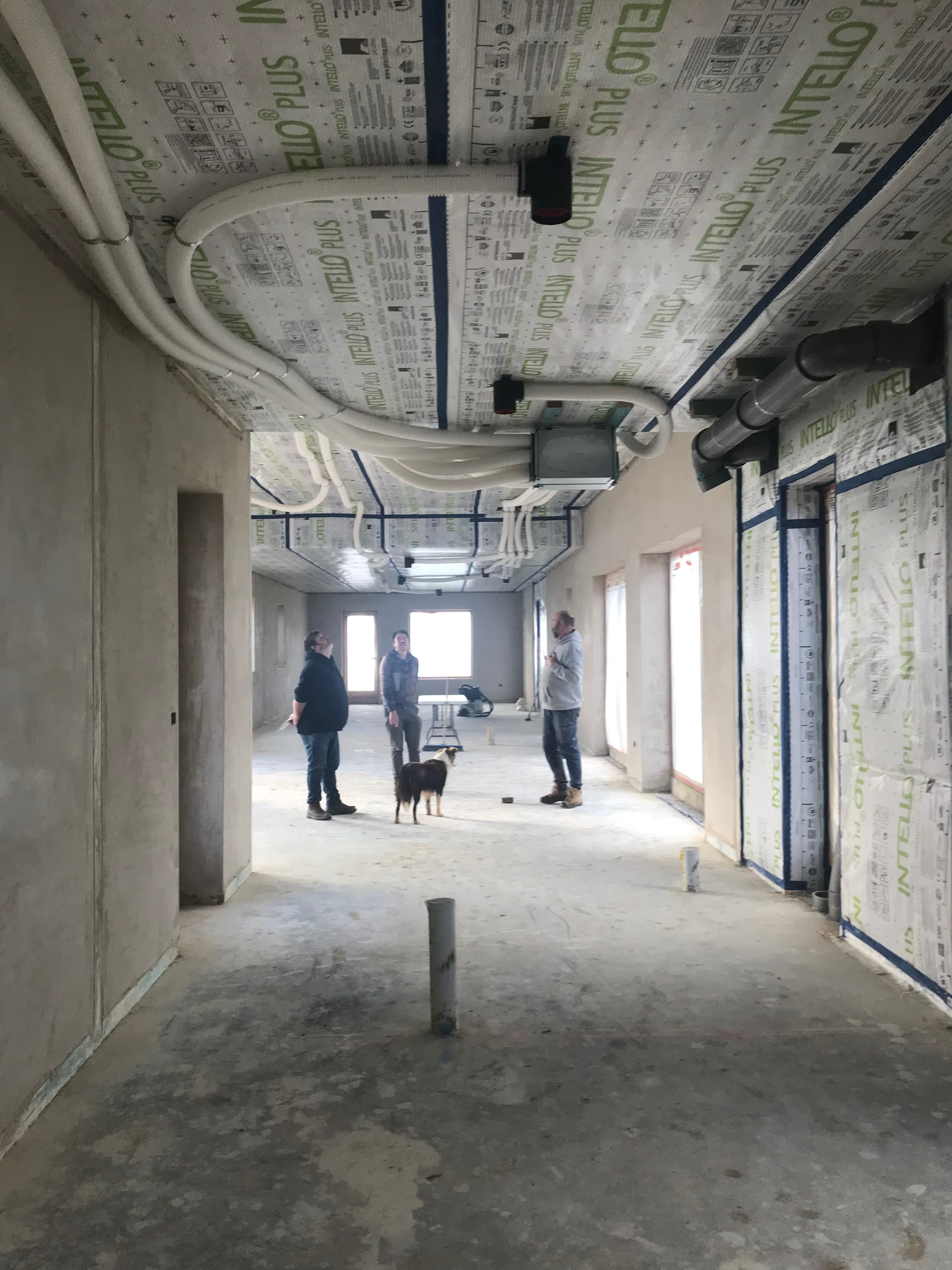
The finished walls with the lime-render internally are so very beautiful - especially the deep window sills which are used as both shelves and window-seats in different parts of the home. We could also have chosen to render the straw externally too, however this would’ve required much deeper eaves to provide weather protection, and our clients wanted the exterior to be clad in a robust, low-maintenance material that was also non-combustible in the event of bushfires.
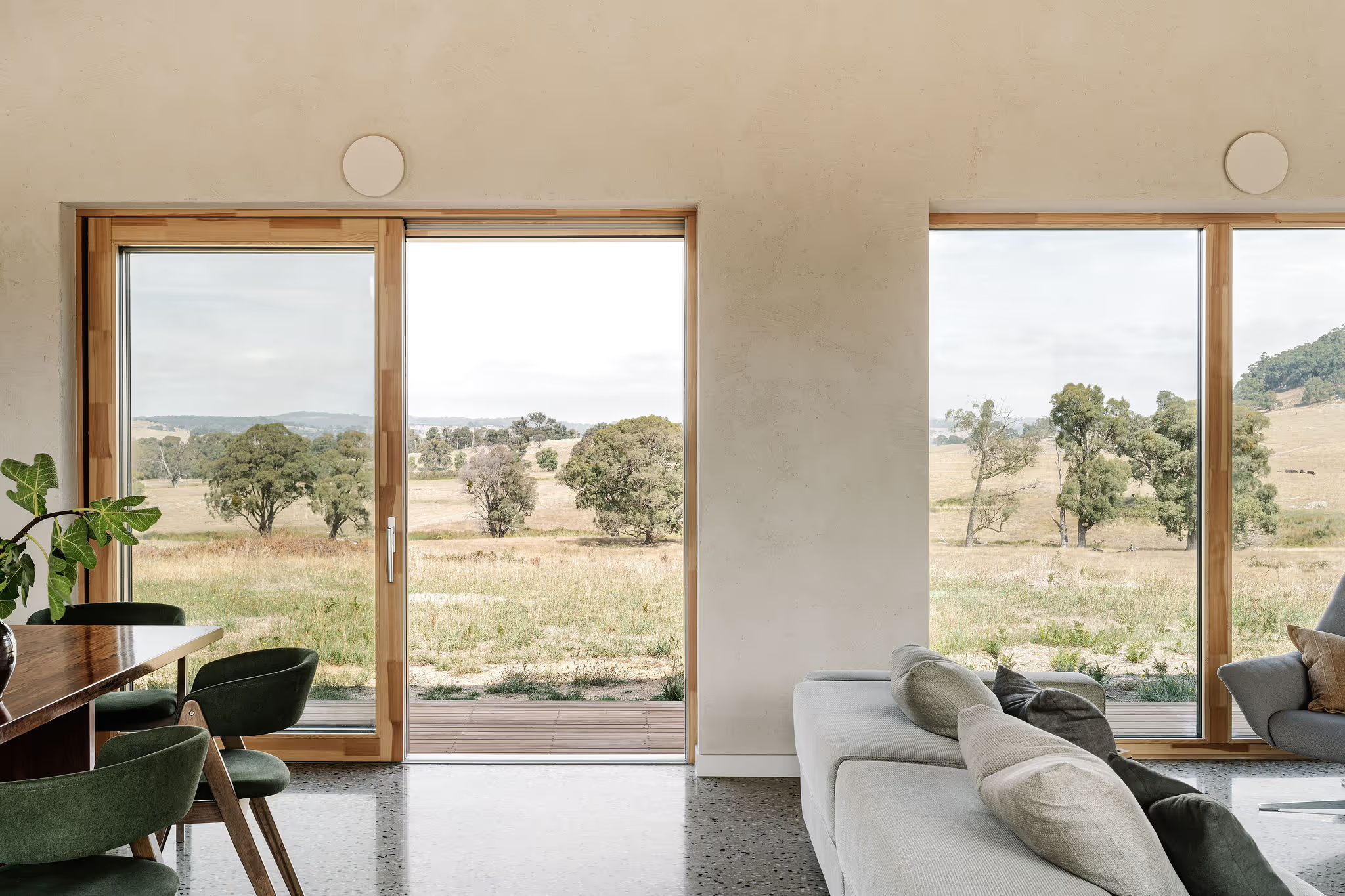
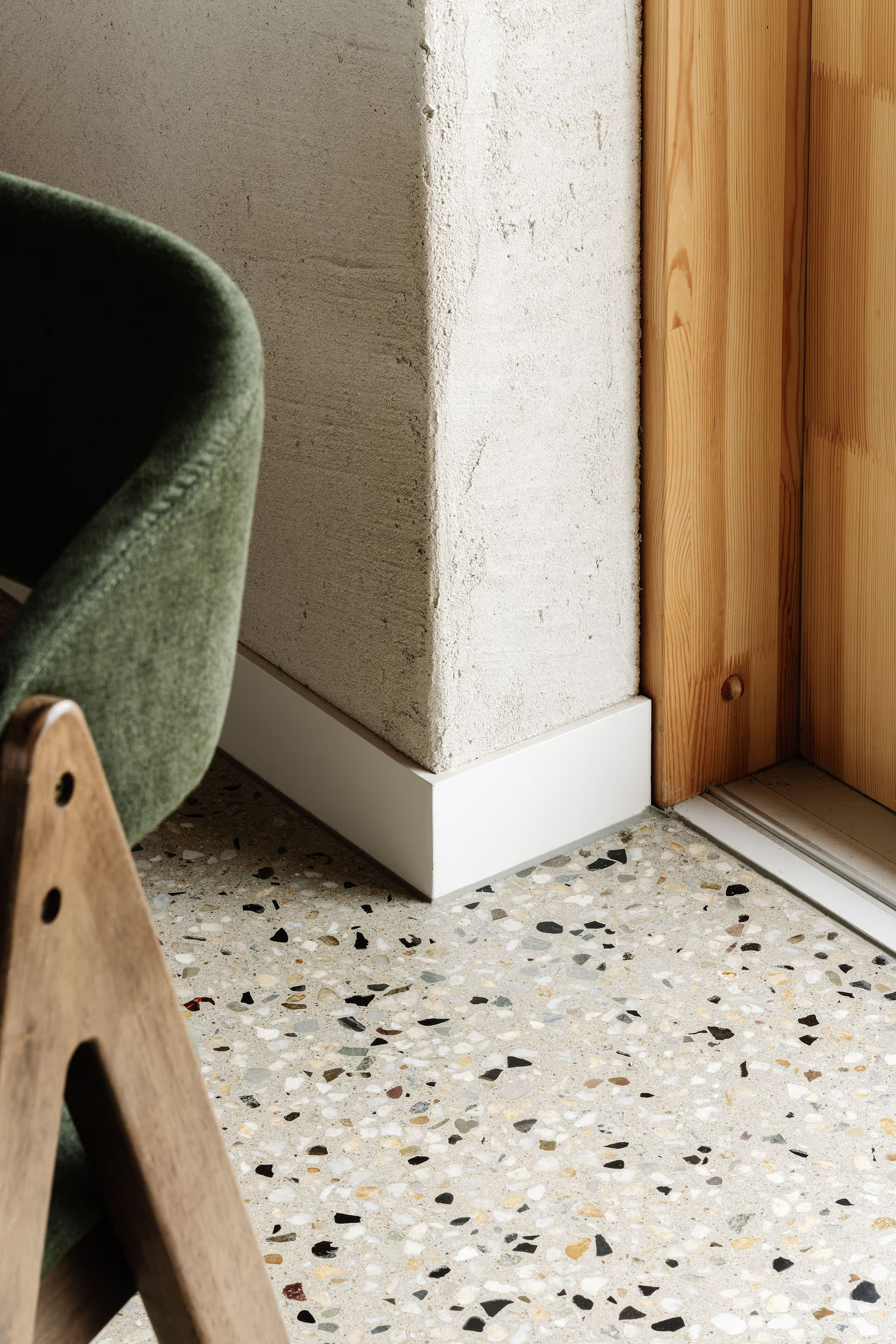
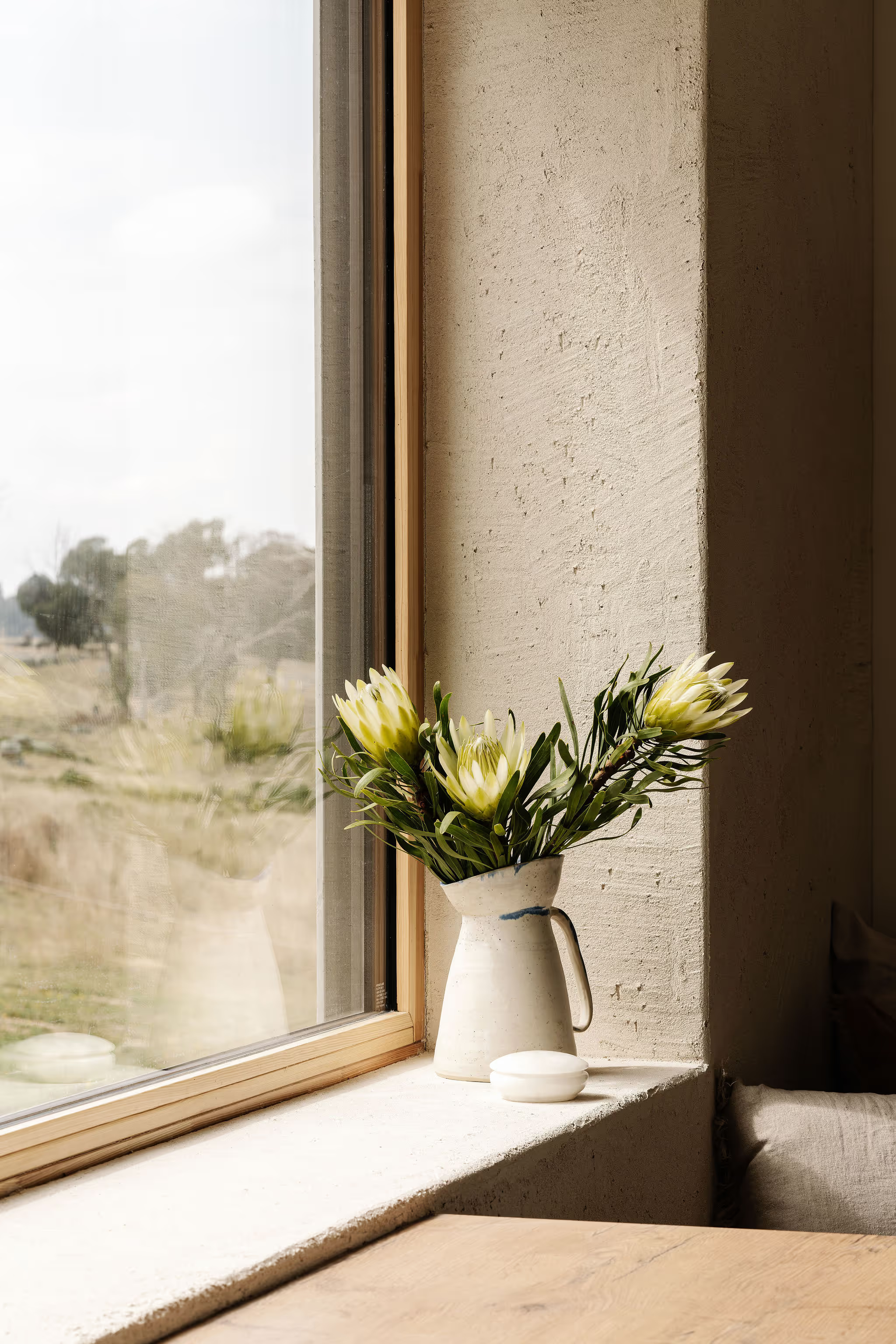
To see images of the finished house and to read the story behind it, check it out in our project gallery here.

,
Company
Discover our people (and what it's like to work here) and awards we've won.
Explore our expansive library of resources for people interested in sustainable, healthy homes.


